January 12, 2003
USS Ontario ATO-13
Author Elmer F. Hartley MM I/C USNR
The ship was a single screw sea-going tug and was laid down by the New York Shipbuilding Co., Camden, NJ, Nov. 23, 1911 and was launched, April, 1912 and commissioned at the Philadelphia Navy Yard, during Sept., 1912.
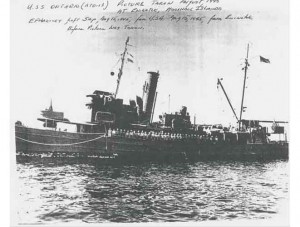 The U.S.S. ONTARIO served as part of the Atlantic Fleet, for 5 years after commissioning. She operated along the Atlantic coast and in the Caribbean, in support of Fleet exercises.
The U.S.S. ONTARIO served as part of the Atlantic Fleet, for 5 years after commissioning. She operated along the Atlantic coast and in the Caribbean, in support of Fleet exercises.
She sailed for Ireland, late summer 1918 and joined the Atlantic Force. Most other duties were patrolling and guarding against enemy submarines. After the W. W.I Annistice, the ship engaged in patrol work, sailing out of Ireland, England, the Azores, Portugal and Gibraltar until 1920, as part of Sub-chaser Detachment 2, U.S. Naval Forces in European Waters. The were in removing remnants of the Great War's minefields, from the seas.
During the Mid-1920s, she sailed to Samoa for duty as a station ship, rescue vessel, transport, Governor's Yacht and flagship of the "Samoan Navy. One other assignments during that period, was being involved in the search for Amelia Earhart.
For the next two decades, aside from regular yard visits, at Pearl Harbor, for repairs, ONTARIO operated out of the Tutuila Naval Station. She became a legend to Samoa's young men, who were encouraged to join the Navy, because of her presence. When I went aboard her, for duty, in 1943, there were 3 Samoan mess cooks, in the crew. They remained aboard, during WW II and until the ship was decommissioned, at San Pedro, CA. in 1946. When decommissioned, the U.S.S. ONTARIO was the oldest and largest tug in the fleet and had served 34 years.
In Jan., 1941, the venerable old tug, sailed from Samoa to Pearl Harbor, for a yard period The ship remained at "Pearl" throughout the rest of the year, while she was being converted from a coal burning ship to one that burned oil. She was one of the last Navy coal burning ships converted.
When the Japanese attacked Pearl Harbor, she was in drydock. The ship went into action, with her two machine guns and was credited with downing one enemy plane.
After the conversion was completed, the ship operated out of "Pearl" with the auxiliary fleet doing yard duty, towing target sleds and retrieving torpedoes.
I joined the ship, June, 1943 and the ship was later assigned and joined Service Squadron 2. We served with the squadron, at the advanced bases and with the invasions forces that captured the Ellice, Gilbert, Marshall and Western Caroline Islands.
From: October 1944 to August 1945, the gallant old ship served as a yard tug at Ulithi and provided varied tug boat services, to the 3rd, 5th and 7th Fleets. These duties included but were not limited to furnishing the amphibious and fast carrier task forces with large and heavy barge moving capabilities. This occurred during the busiest period of the war, as the Armed Forces were preparing for the invasion of Japan.
Other assignments, besides ammunition and water barge and floating dry-dock towing, between Island invasions, included laying anchor buoys along the coast of Peleliu, laying channel buoys in the Makin Atoll, pushing on the stern of 2 the Iowa class battleships all day in order to swing them 360 degrees while they were anchored. This was required so that they could compensate their magnetic compasses, assisting a DE off the reef at Tabateawea, Gilbert Islands and assisting the mine damaged 4 stacker DMS-17---USS Montgomery.
The ONTARIO departed Ulithi for Eniwetok during July, 1944. I left the ship there as I was transferred to the US, for additional schooling. My transportation to the San Francisco and Treasure Island was via a Merchant Marine Victory ship. I was aboard this ship and at sea when the bomb was dropped. .
The ONTARIO steamed from Eniwetok, at the end of August, 1945 and sailed to Pearl Harbor, San Diego and finally to Long Beach, CA When she arrive in the US. she had two storm damaged patrol boats in tow. The old tug had arrived back in the US, for the first time in 25 years. This was 20, December, 1945 and she was immediately assigned to duty as a yard tug, at Long Beach, CA. She performed these duties until decommissioned, 3 June 1946. She was struck from the Navy Register 19 June, 1946 and was sold to a private party , 4 April, 1947. This ended the Naval life of one of the most gallant and interesting ships of the United States Navy.
A veteran of two world wars and the long peace in between, ONTARIO received 1 battle star for W. W.II service.
Some of the poignant memories I have and that occurred while serving on this fine old tug, during W. W.II and in the South Pacific, are as follows.
1. Re-tubing two scotch boilers while alongside a repair-ship, that was anchored in the Ulithi Atoll. The old boiler tubes were leaking so badly, that the ship' s evaporators were not able to distill enough seawater to supply the necessary boiler feed water, for the boilers. Without water and steam, the ship could not get underway.
2. Going ashore on Mog Mog Island, Ulithi Atoll and drinking hot beer. I seem to recollect that it was 1945, that the Secretary of the US Navy, Mr. Forestall, approved beer to be aboard, for the enlisted men and the crews of US Navy ships. Our ship allowed two cans per person. The beer had to be drunk ashore. The trick was to find a shipmate that did not drink beer and then barter, for his two cans.
3. Listing the old ship, at sea. This was necessary as the old ship's outer plates would crack and let Bunker C fuel oil leak out of the tanks, when the oil in the tanks was above the waterline. This oil leakage to the sea, would leave a telltale trail, in the wake, of where the ship had sailed Not recommended in submarine infested waters. The cracks, in the oil tanks always appeared after we had moved ships and barges, alongside. The subsequent pounding did the damage. When the fuel oil level in the tanks was below the waterline, seawater would enter the tanks and would eventually hit the boiler burners and extinguish the boiler fires .The fireman and water tenders, would have to clear the fuel system and restart the fires. In the meantime, the ship would have to stop "steaming" until there was enough steam pressure again generated, to propel the main engine.
During the listing and repair operation, a ship’s welder was hung over the side so that he could weld and seal the cracks.
4. The nights we anchored, at Tarawa and the lone Japanese bomber would visit us 3 or 4 times a night, at an elevation so high, that the fleet’s anti-aircraft guns, could not hit or deter him. These were probably nuisance runs and he was called “Midnight Charlie”. Every time he appeared, the ships would go to "general quarters", which meant the "Black Gangs" would have to '1ight off' and prepare to get underway. 20 minutes later, the plane would depart the harbor area and we would secure. This activity all stopped, when the Air Force brought in P-38 night fighters and took care of him.
5. Standing steaming watches and maintaining steam driven equipment, in the tropics and in a 135 degree F. engine room. The man on throttle watch did remain under a blower. The rest of the watch remained in the shaft alley, where there was another blower.
6. The evening Japanese midget submarines, torpedoed an oil tanker as she was entering the harbor, at Ulithi. The tanker was burning and our ship was ordered to assist. The entire 3rd, 5th and 7th fleets, plus supporting craft, were at anchor, in the harbor. Every destroyer, Destroyer Escort and Patrol Vessel, anchored in the harbor, got underway and set about dropping depth charges, in the harbor. The ONTARIO'S engine room floor plates bounced 3 or 4 inches of their supports and I thought the underwater explosions would sink the old ship. They didn't but did drive the two enemy subs ashore.
7. The night we were at anchor, in Ulithi, just west of a small island atoll. The ONTARIO'S crew were sitting on the "fantail" of the ship looking aft at an Essex Class carrier. We were congregated on the fan-tail, to watch the evening movie. My memory is not too good these days but I believe the carrier, astern of us, was the USS RANDOLPH.
She was in the harbor, with the rest of the 1000 or so ships. She was at anchor, astern of us. On board the ONT ARIO, we were waiting for the evening movie to begin. Just at twilight, the flight deck of the RANDOLPH explodes, in flames. General Quarters was sounded aboard our ship and as I was running forward on deck, to reach the engine room and my General Quarters engine-room station, a Japanese plane flies over and about 100 feet above the ship. It dives into and explodes on the island, that is directly in front of us.
The plane that dove into the carrier, landed in the carrier's crew that was also assembling on their flight deck, for their evening movie. Too many were killed and injured, that evening.
The pilot of the plane, that dove into the beach, must have mistaken the lights, on the island, for the lights of another carrier. These two planes must have flown under the Navy's radar, to be able to arrive, undetected at a harbor with the entire 3rd, 5th and 7th fleet, at anchor.
8. Taking salt water baths because of water restrictions, that were caused by the lack of fresh water and created because of the leaking boiler tubes.
9. Sleeping out on the "fantail" at night and while we were at anchor. This was to get out of the hot aft sleeping compartment. The beautiful star filled nights associated with the South Pacific and cool evening breezes, were as written, in a travel brochure.
10. Catching sharks, in various lagoons, of the many atolls, where we anchored We used heaving lines and home-made hooks. The sharks were heaved out of the water using the boat davits. The 3 Samoans aboard had a great dislike for sharks and would show the crew how to remove the jawbone and collect the teeth. They also disemboweled the sharks and it was amazing to see what these scavengers would attempt to digest, i.e. cans, bottles and toilet paper. I was astonished to see live baby sharks fall out of the stomachs of the sharks, into the water and swim away,
11. To be able to serve with two of the last members of the US-Samoan Navy. They had enlisted in the "Fita-Fita" guard and part of there dress uniform was grass skirts. They were released from the ONT ARIO when the ship arrived in Long Beach, during 1946. They were naturalized and departed for Samoa, after serving 14 years and the entire war and their Naval career, on the U.S.S. ONTARIO.
12. Participating in swimming parties that swam in the shark infested lagoons and off the ship, while we were at anchor. A crew member was positioned with a rifle on the ship's bridge and he was supposed to drive off the sharks, using the rifle, if any appeared Looking back on these swimming adventures, I am not convinced that the man with the rifle would have achieved or completed his assignment, without hitting one of the swimmers or whether he could have driven sharks away from the swimmers.
13. The reason I say this is, because during my 28 mos. of service during W. W .II, I never held or shot a firearm. The man on watch probably had the same amount of experience
14. Going ashore at Tarawa, after the Island was secured, by the Marines. The crew of the ship was allowed to go ashore to view the destruction, that the shelling, by the Fleet and the bombing by the Air Force, had created It was awesome and unbelievable. There was not a palm tree standing, in its original state. There were few standing, at all. The size and thickness of the Japanese bunkers was beyond belief It was inconceivable and was not difficult, to appreciate the heroic actions of our Marine forces as they had waded ashore, over the shallow reef and into Japanese gunfire.
15. My futile attempts to design and construct a ship's washing machine. There was none aboard The crew cleaned their clothes, washing them by hand and using buckets. We would tie newly purchased dungarees, to a heaving line and tow the dungarees in the ship's wake. This was done to soften and bleach them. Perhaps this practice led to the "stone washed" dungarees of the present era.
16. Being indoctrinated, while in "Boot Camp', to the art of sleeping in and securing my han1mock, wit1l a mattress, pillow and blankets around the sea-bag that contained all of my clothes. I
never had put the hammock to use again, after completing my training at the Great Lakes Naval Training Station. It traveled with me and was stowed aboard the ship. The hammock accompanied me and my sea and duffel bags, when I left the ship for the 'States" and was still with me when I was discharged at Great Lakes, during April, 1946.
17. The experience of seeing the damaged and sunken battleships, being salvaged, re-floated and returned to duty , while we were operating as a yard tug, at Pearl Harbor.
18. The search for the heavy cruiser U.S.S. Indianapolis when she disappeared after delivering the A- bomb to Saipan. 1945.
19. Witnessing the return of a Task Force, to the Ulithi lagoon after having survived the forces of a Central Pacific typhoon. Some of the damage to the ships included the bow end of a carrier flight deck that curled back and the bow of a heavy cruiser that was tom of, back to the second gun turret.
20. The postage free V-mail system that we used to post letters to our families.
21. The censorship of our outgoing mail, by an officer of the ship. He had to read our letters to our loved ones, to make sure we did not say anything that would benefit the enemy.
22. When a package of cigarettes, were 5 cents a pack, or 50 cents a carton.
23. My first experience at cutting men's hair. There was no assigned barber aboard We cut each others hair. Crew cuts were not too difficult to perform. No one rea1ly cared about the outcome. We were not going anyplace. One did not want to become too professional, as he would find a permanent job.
24. The memories of living and working aboard a 185 ft. vessel, with a ship's
compliment of about 80 men and boys. Some of Us never left the ship or went ashore for a year or more, at a time. There was no place to go.
25. The small hole in the ship's superstructure that was the Ships "Po-Dunk" store. This was where the crew could purchase the other necessities of life, such as candy bars, cigarettes, hair tonic, toothpaste and brushes, etc.
26. Towing concrete built barges that displaced 10,000 tons. They were as massive as a heavy cruiser. We never made good progress forward towing these monsters and during storms, I believe we actually "lost ground". We had the same experience, when towing floating dry-docks.
As I reminisce and write this epistle, I tend to recall only the good experiences of serving with a fine group of Navy personnel. We always had food and a place to sleep.
Elmer F. Hartley MM I/C USNR



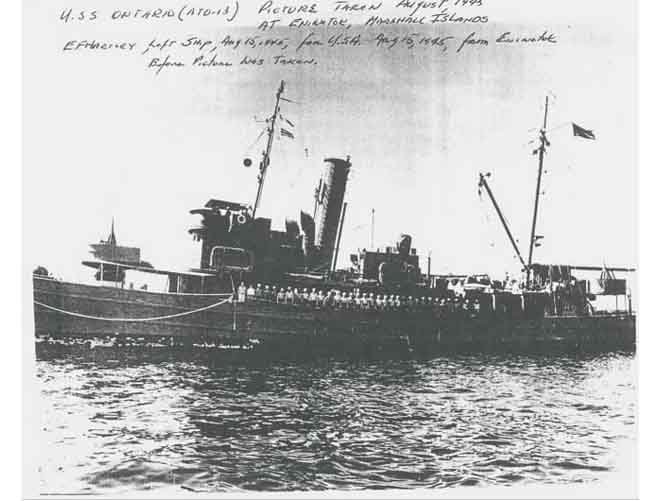
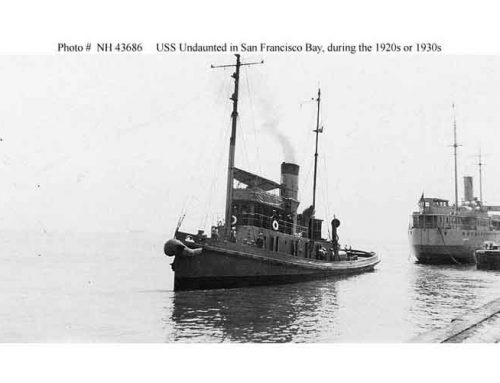
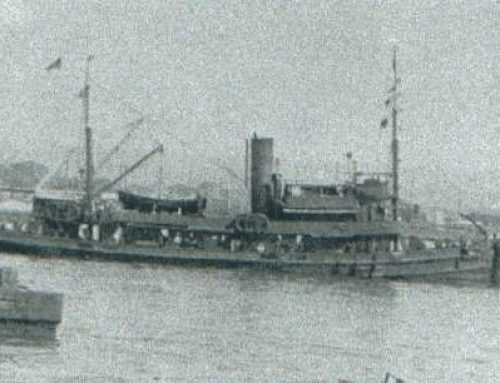
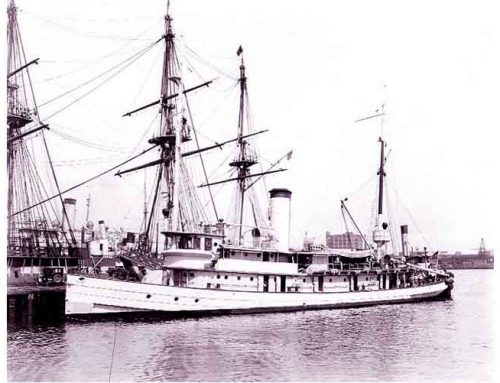
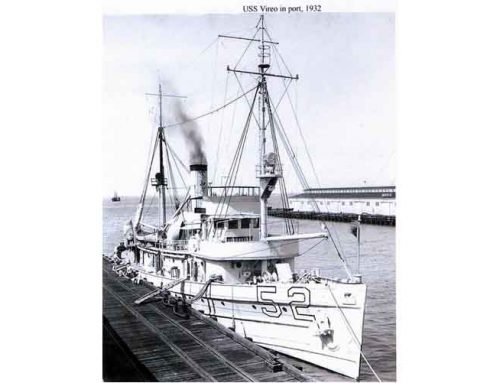
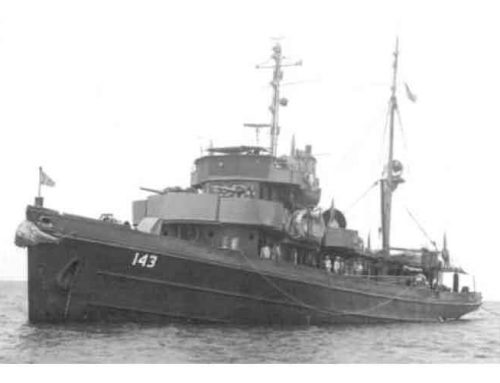
Leave A Comment
You must be logged in to post a comment.